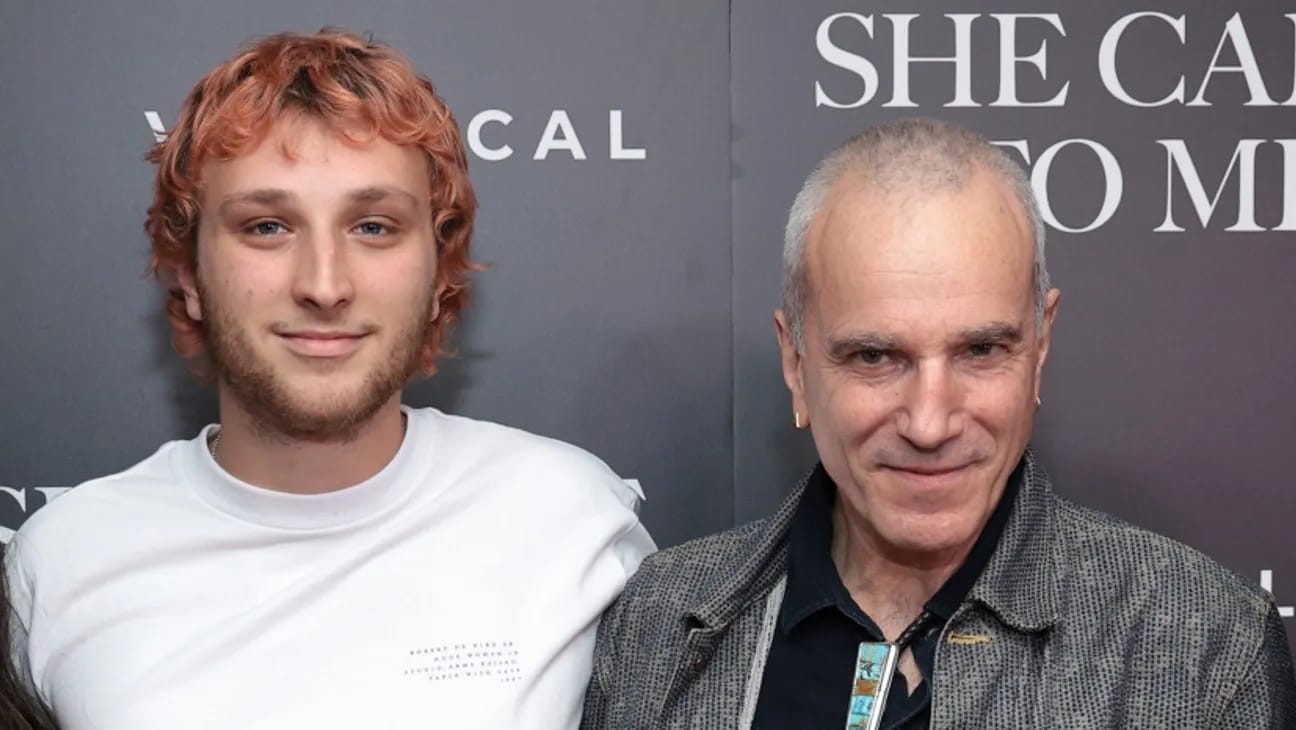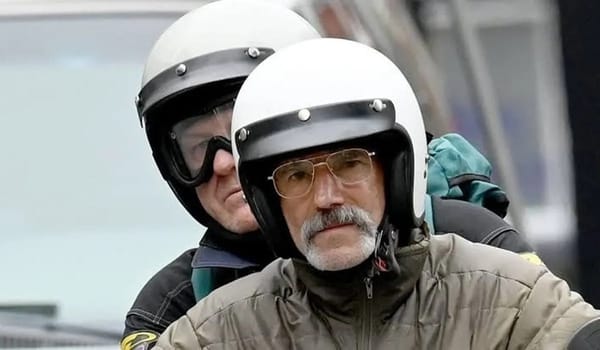★★½ (2½ out of 4)
Every movie lover is thrilled that Daniel Day-Lewis has returned to acting after an eight-year hiatus. What a shame then that hardly anyone is pleased with the weak construction of his comeback vehicle. It’s called “Anemone,” it’s in theaters everywhere and it’s named after a wildflower that blooms every year. Unlike an anemone, Day-Lewis decided to call it quits for good with 2017’s “Phantom Thread.” The rest was silence. Until now.
There is not much lightness in the telling of this tale, whose default position is dreary, but when humor does emerge, especially in a monologue that Daniel Day-Lewis delivers with a welcome sense of scatological glee, it is to be cherished.
What brought him back? His painter son, Yale grad Ronan Day-Lewis, 27, is the answer. The two collaborated on the script for “Anemone,” which also marks the directing debut for the younger Day-Lewis. On stage at Lincoln Center, where “Anemone” premiered as part of the New York Film Festival, the three-time Oscar winner for “My Left Foot,” “There Will Be Blood” and “Lincoln” confessed that “I made a f—ing fool of myself by announcing that I was going to stop working, and probably a bigger fool of myself coming back. But to deny myself the possibility of working with Ronan just to stand on my pride, well ...”

You fill in the blanks. In “Anemone,” Day-Lewis plays, of all things, a hermit. His Ray Stoker has been holed up in a cabin in the North England wilderness for 16 years, embittered by something initially held back by the script. Into this bleak midwinter, relieved only by the fresh anemone in the crude cabin, comes his estranged brother Jem, played with indelible intensity by Sean Bean, best known as Ned Stark in “Game of Thrones,” but an asset to any role he takes on.
As a director, Ronan Day-Lewis relies as much as possible on natural elements to paint an atmosphere that speaks for the characters. There’s a hell of a hurricane that suits Ray just fine. Cinematographer Ben Fordesman and composer Bobby Krlic (the English musician who records as the Haxan Cloak) add to the moody mix of fire and ice.
Roy and Jem regard each other with the feral suspicion of animals. A godly man, Jem has come to his brother at the bidding of his partner, Nessa (a terrific Samantha Morton), who thinks Ray might help save her son, Brian (Samuel Bottomley), a violent boy whose emotions resist all efforts at soothing calm.
The reason Nessa thinks Ray can make a difference should be obvious from the sins-of-the-fathers theme at the center of the script. There is not much lightness in the telling of this tale, whose default position is dreary, but when humor does emerge, especially in a monologue from Ray that Day-Lewis delivers with a welcome sense of scatological glee, it is to be cherished.
The backstory of “Anemone” takes us to roots of the Troubles, the well-documented, 30-year Irish-British conflict that left scars of trauma among Catholics and Protestants, royalists and independents. It turns out that Ray, his youth scarred by priestly sexual abuse and parental violence, had defected as a British soldier to join the IRA, an event whose repercussions among friends and foes have caused him to retreat from the world.
“Anemone” does nothing so trivial as to compare Ray’s retreat to Day-Lewis’s withdrawal from acting, but the idea of escaping a trap, even one of your own making, permeates the film. It also causes “Anemone” to run aground on its ambitions to pack too much in, to make a single story encapsulate an entire era of emotional disconnection.
Still, the one unassailable glory of “Anemone” is the raw, elemental power of Day-Lewis. He turns a speech Roy delivers about his past, present and uncertain future into a revelatory exploration of human deprivation and resilience. In tribute to his father’s artistry, Ronan Day-Lewis frames that performance so you feel it in your bones.
Note to the cinema gods: Don’t make us wait another eight years for the next Day-Lewis lightning strike. Start now.

